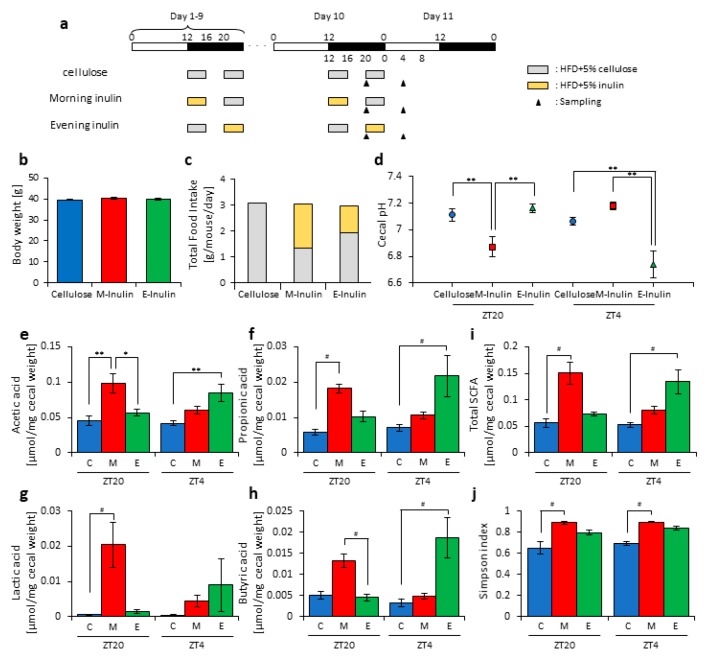Figure 3.
Morning inulin feeding decreased cecal pH and increased short-chain-fatty-acids more than evening inulin feeding. (a) Experimental schedule, where white and black bars indicate environmental 12 h light and dark conditions, respectively. The gray bar indicates feeding with a high-fat-diet (HFD) and 5% cellulose. The yellow bar indicates feeding with HFD and 5% inulin. The black arrowhead indicates the sampling time. (b) Body weight before sampling. (c) Average daily food intake. The gray bar indicates the average daily food intake of cellulose, and the yellow bar indicates the average daily food intake of inulin. (d) Cecal pH of mice housed for 10 days for each group. (e–i) SCFAs of mice, including (e) acetic acid, (f) propionic acid, (g) lactic acid, (h) butyric acid, and (i) total SCFAs. (j) Bacterial alpha diversity. Comparison of the Simpson index estimation of the 16S rDNA gene libraries at 97% similarity from the sequencing analysis. All values except (c) are represented as mean ± SEM (cellulose at ZT20 (n = 5) and 4 (n = 5); morning inulin at ZT20 (n = 5) and 4 (n = 5); evening inulin at ZT20 (n = 5) and 4 (n = 5)). ** p < 0.01, * p < 0.05, evaluated using the two-way ANOVA with Tukey’s post hoc test. # p < 0.05, evaluated using the Kruskal–Wallis test with Dunn post hoc test with a two-stage linear step-up procedure of the Benjamini, Krieger, and Yekutieli test for multiple comparisons. Cellulose, morning inulin, and evening inulin are C, M, or E, respectively.

